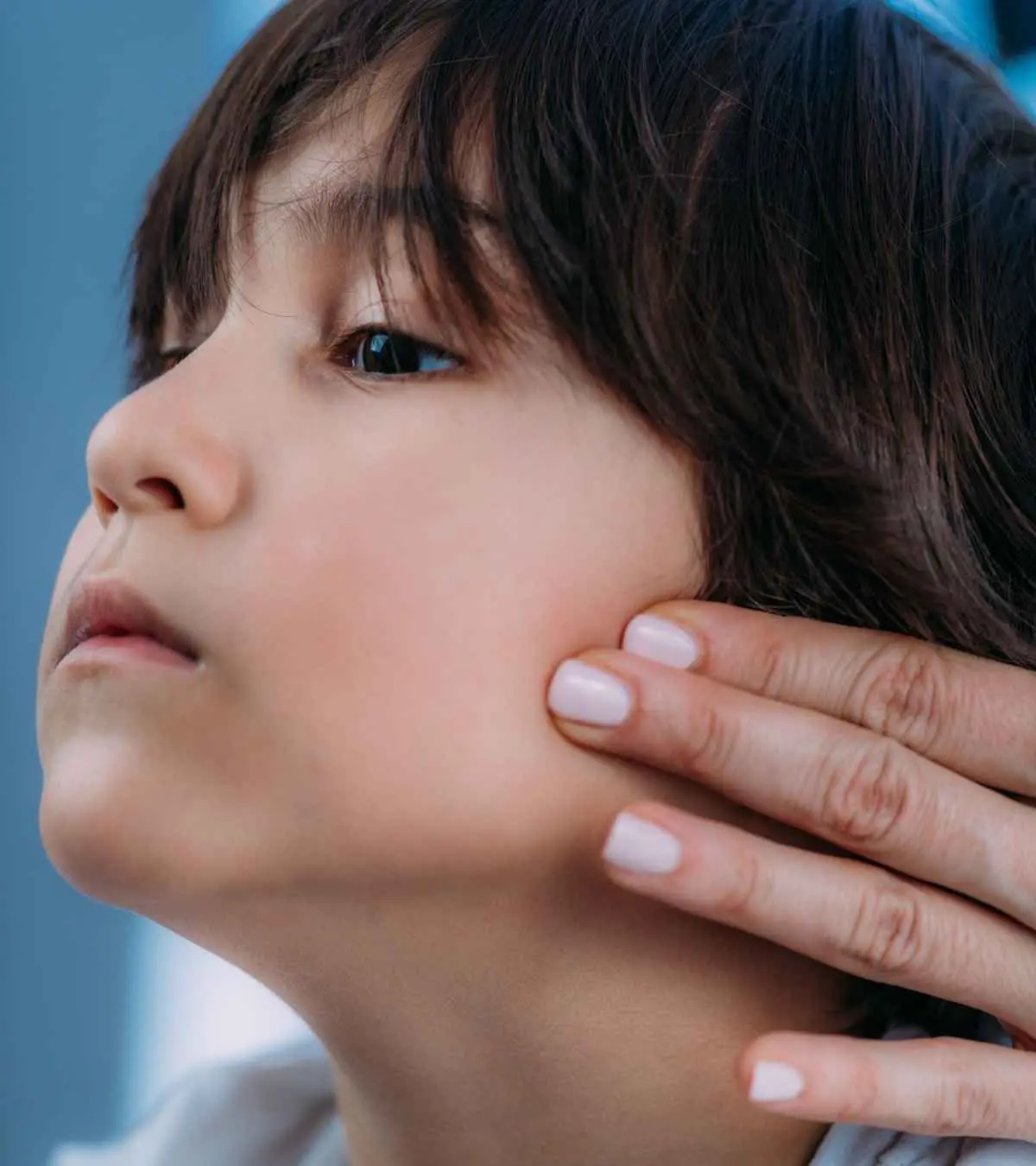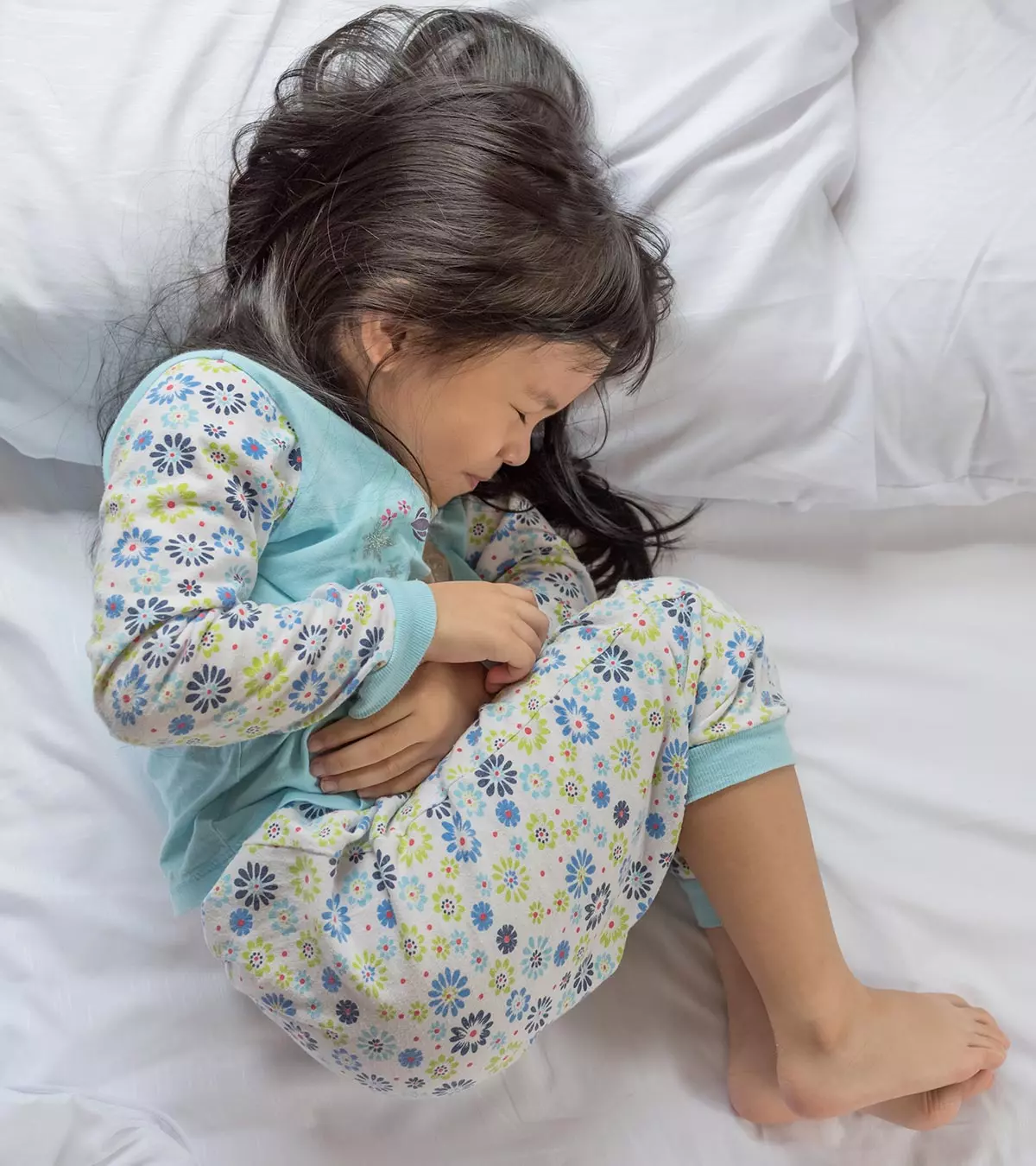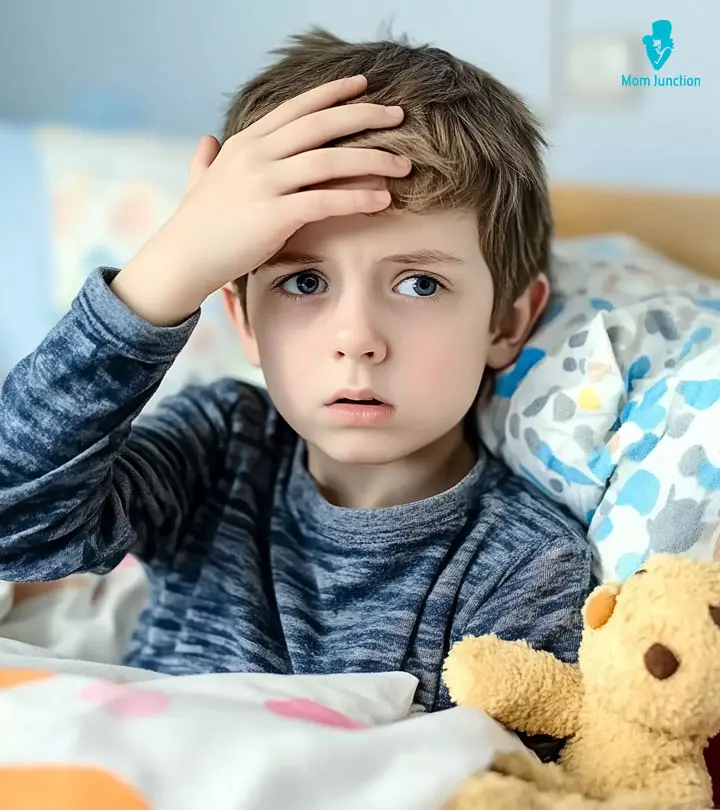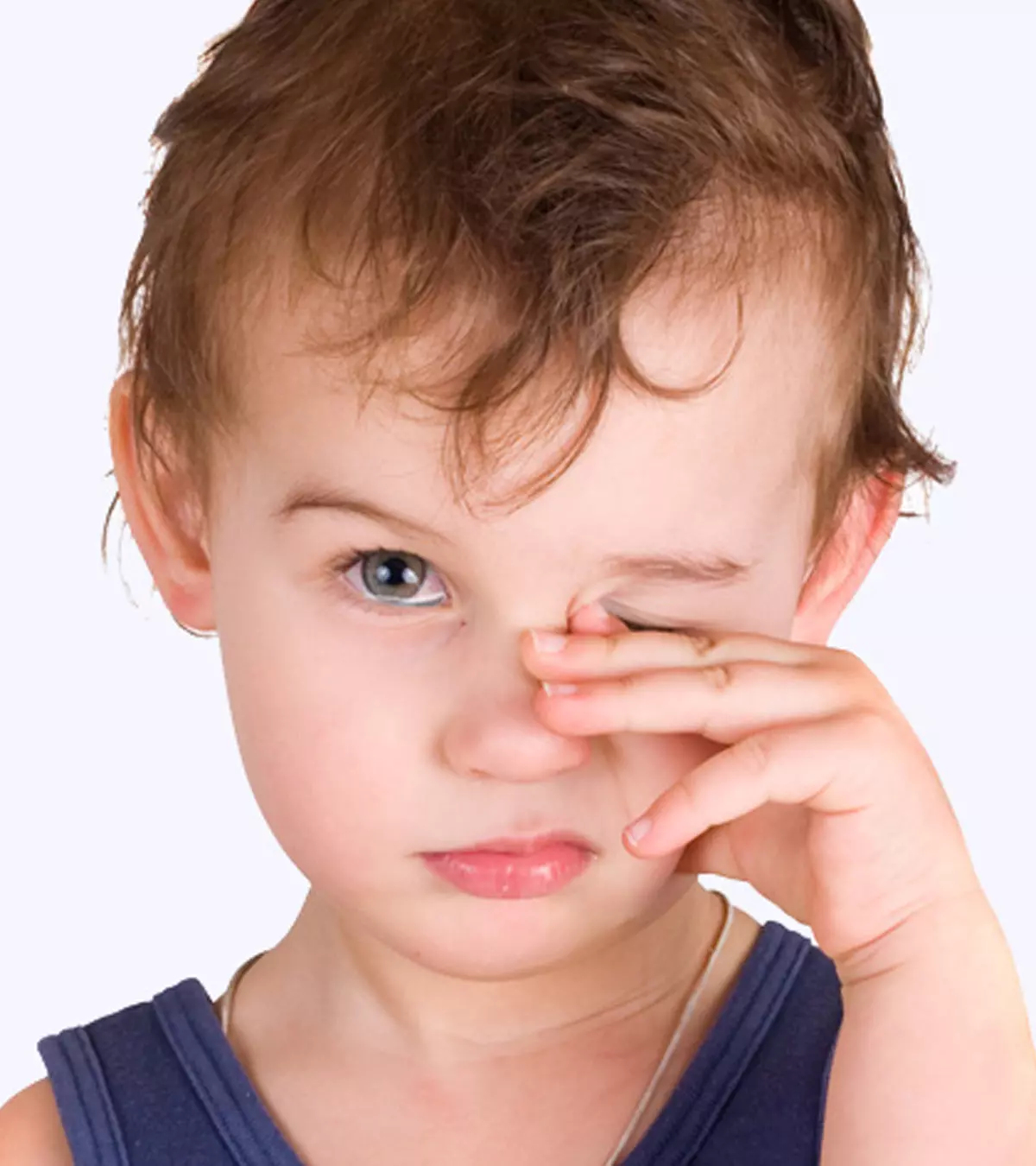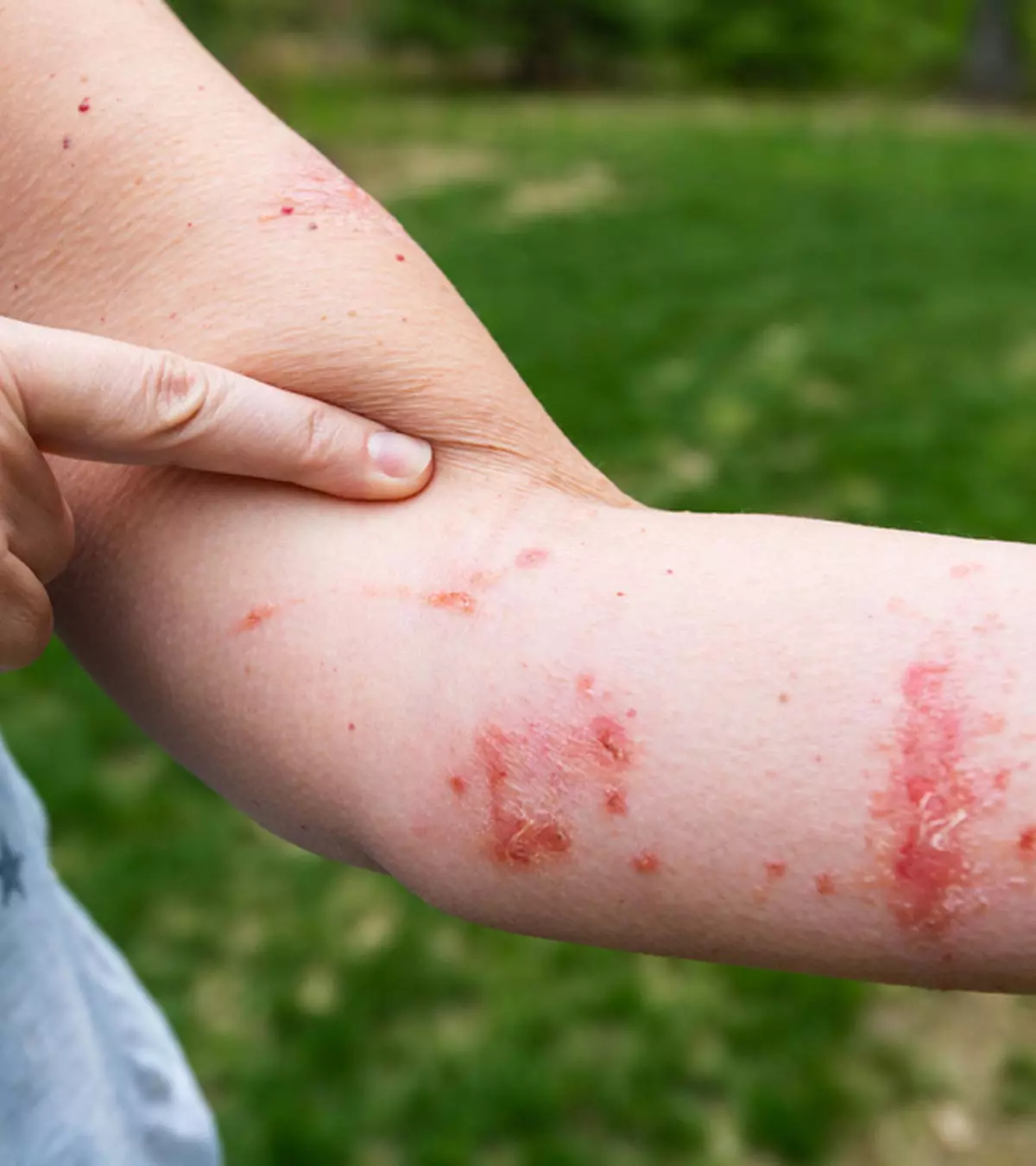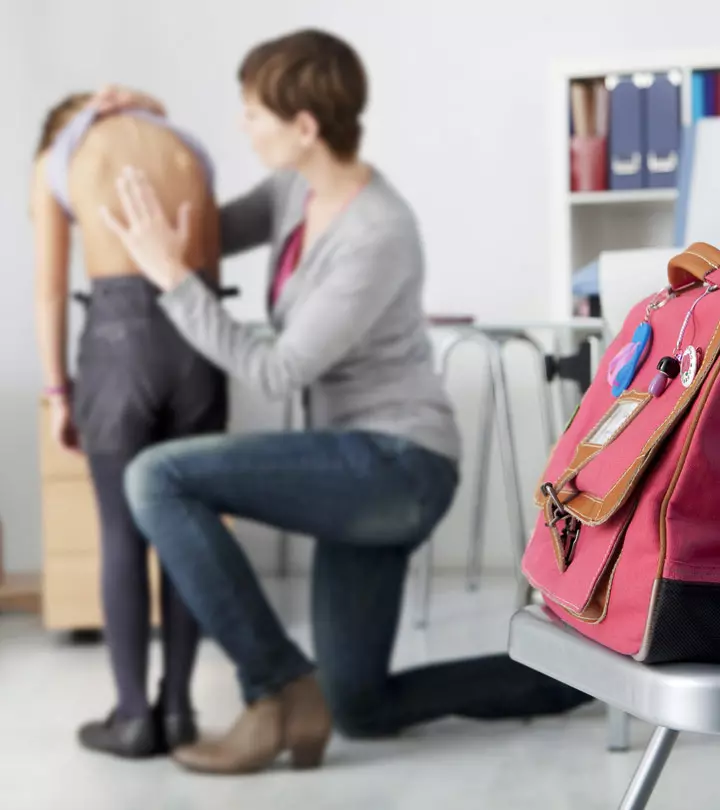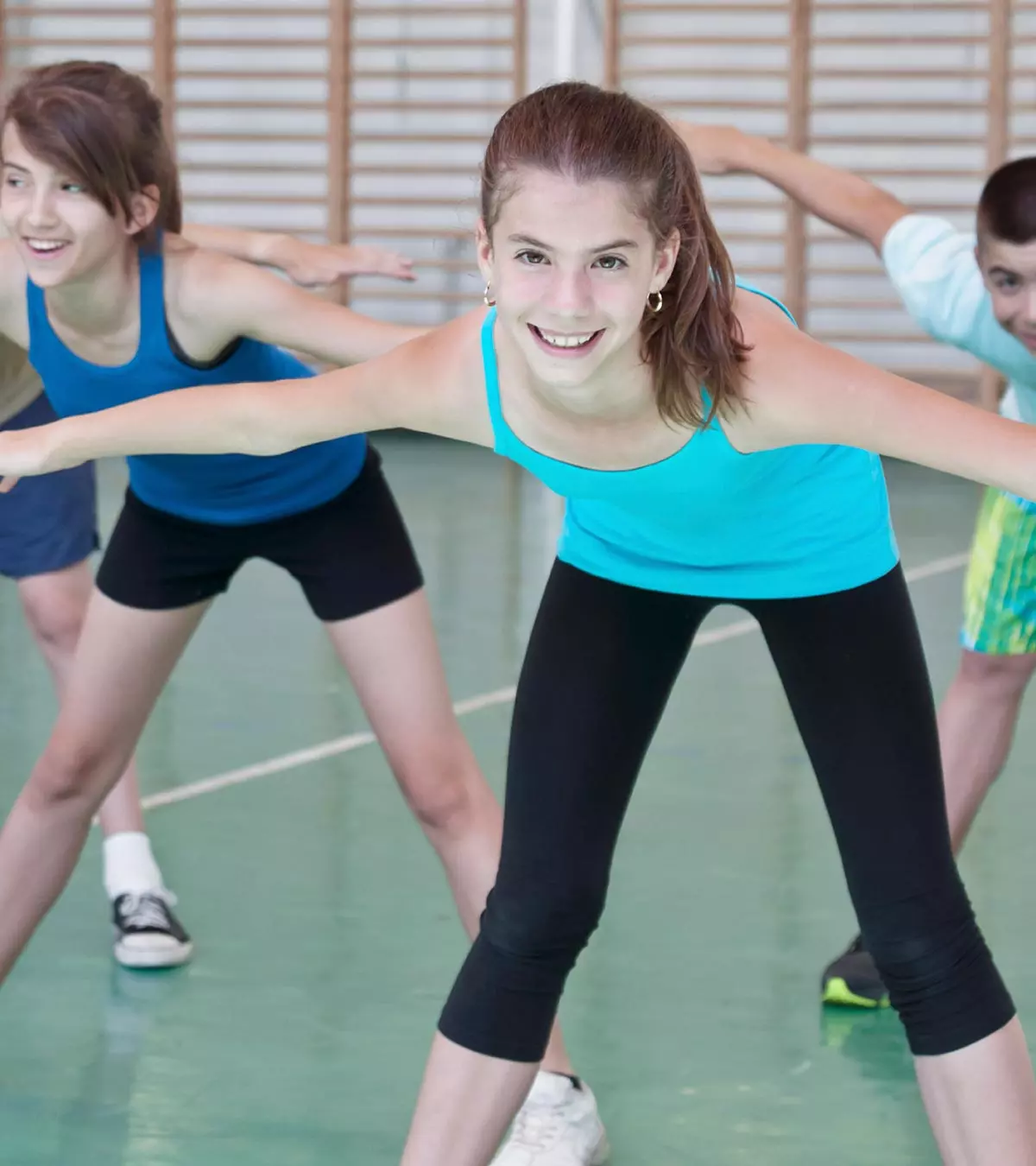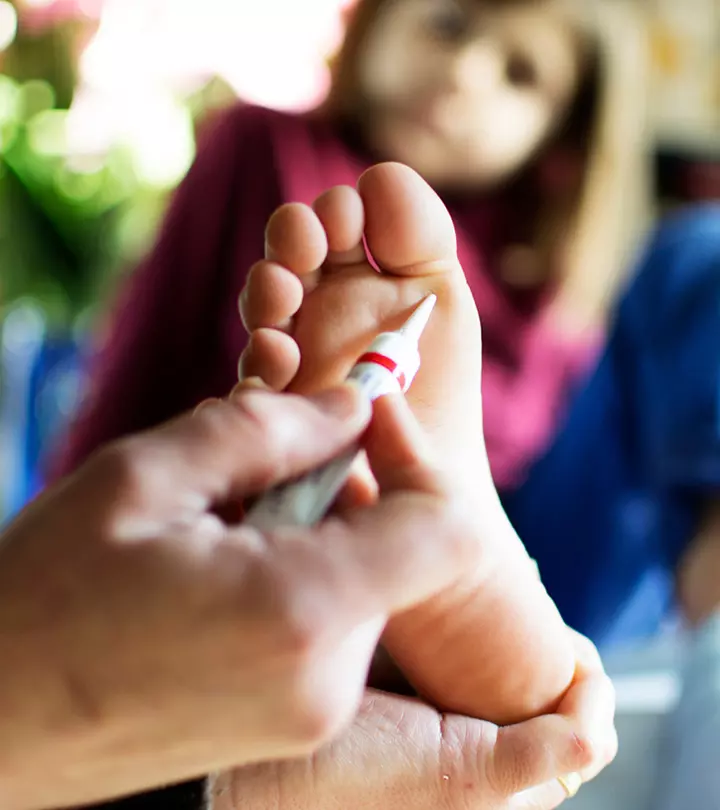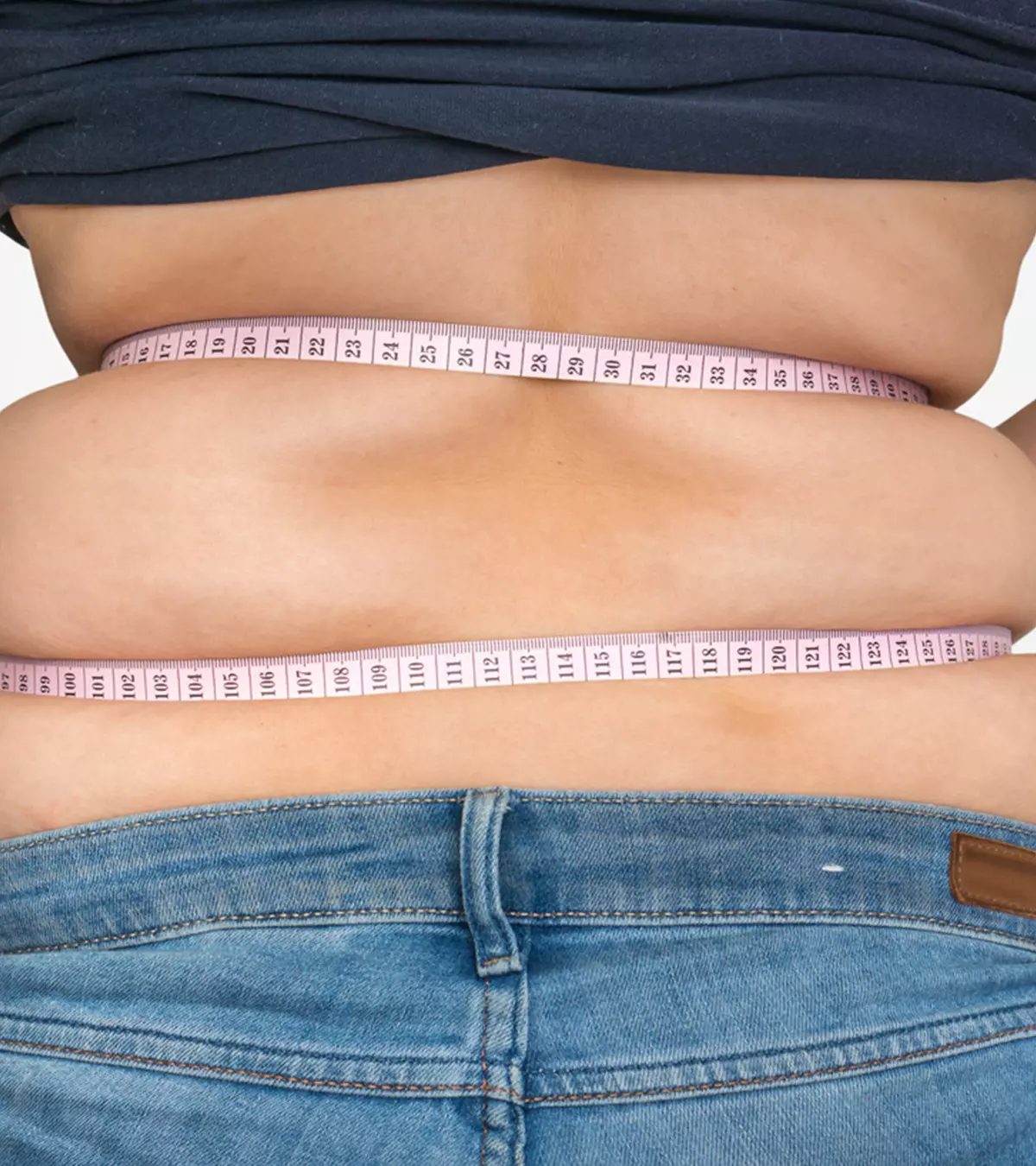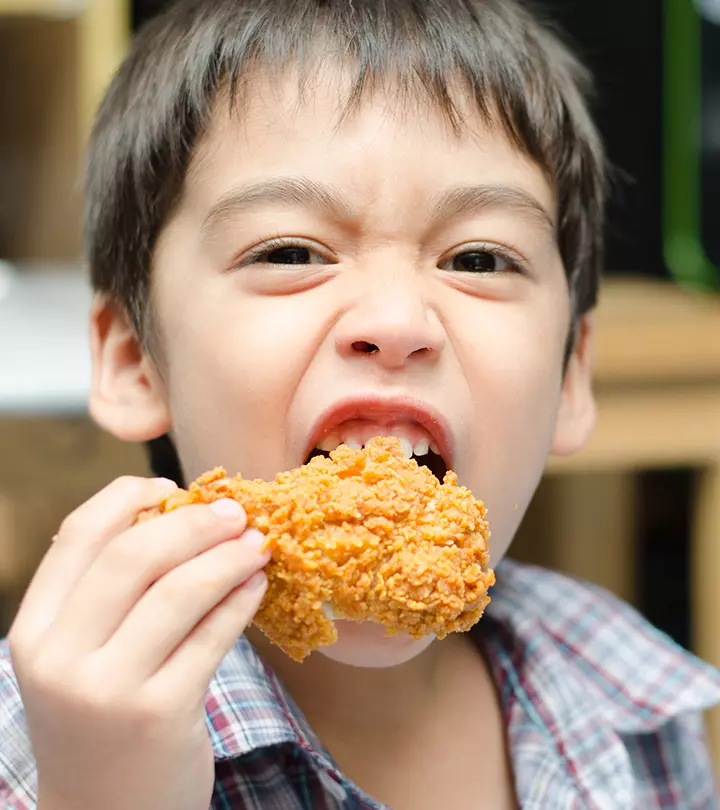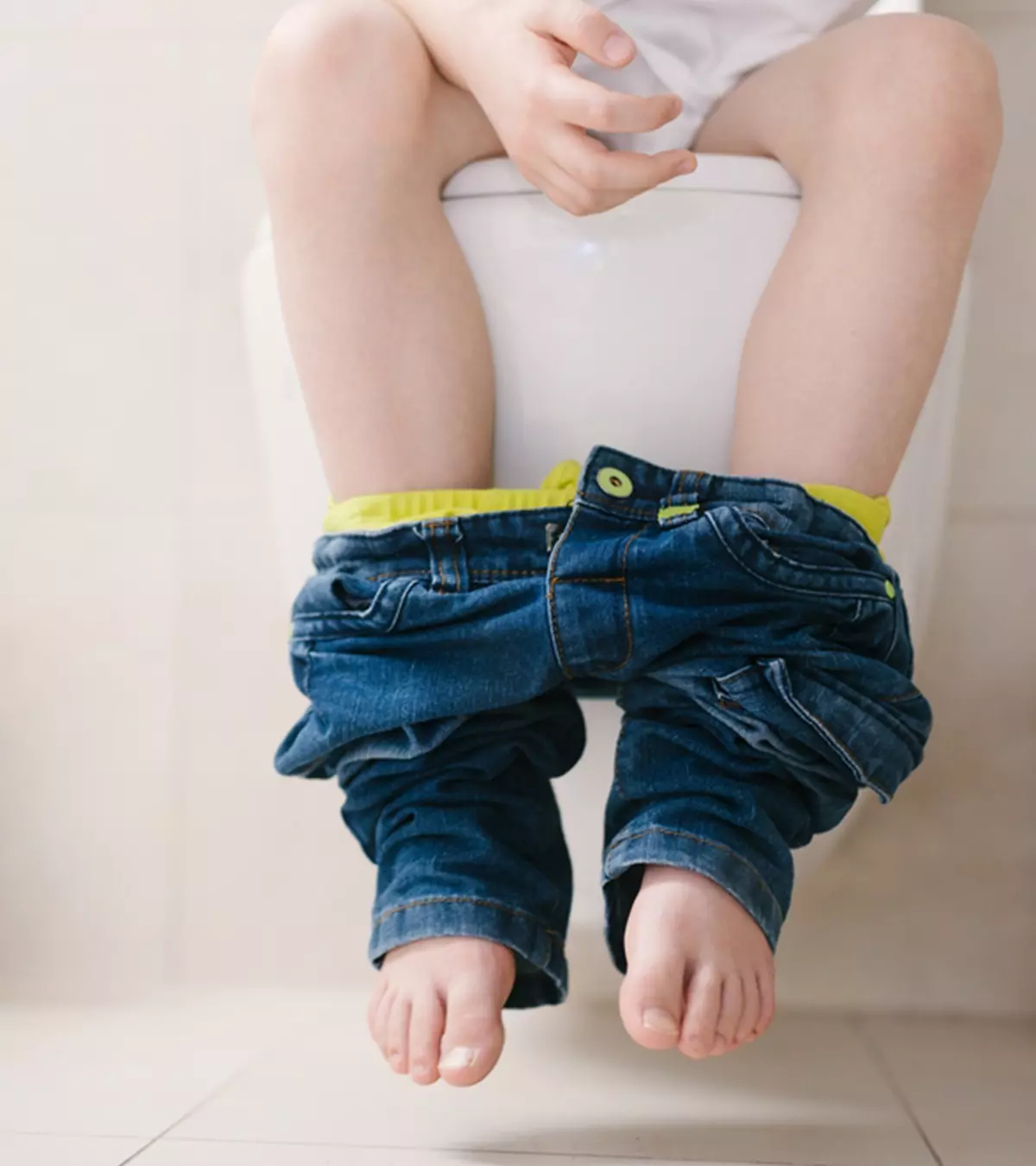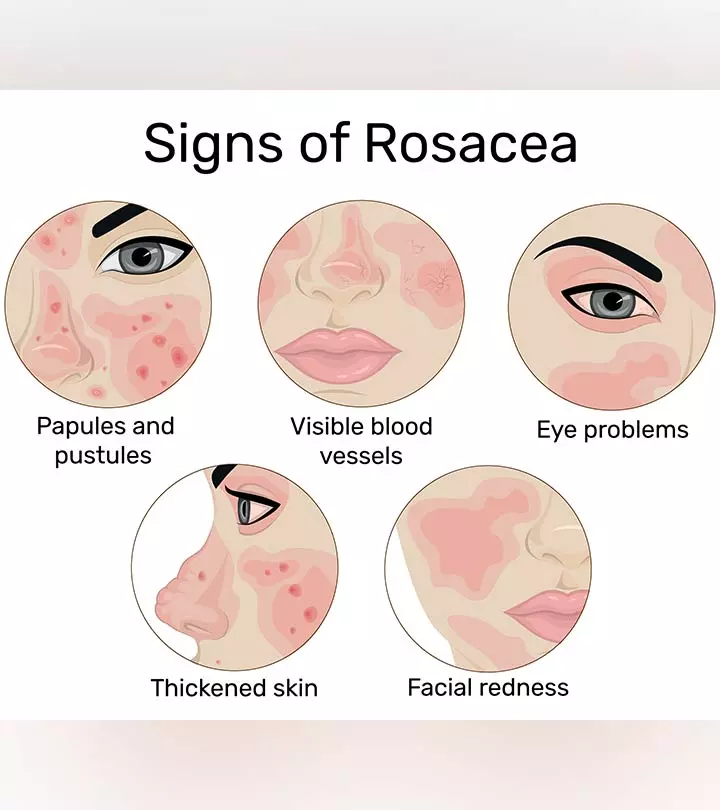
Image: Shutterstock
Rosacea is an inflammatory condition that causes skin redness, commonly on the face and neck. Rosacea in children is uncommon, and it is usually seen in adults. If a child has rosacea, they can have flare-ups that may become frequent and intense over time. Moreover, a delayed diagnosis could lead to issues such as pimples, pustules, broken blood vessels, and other skin conditions (1) (2). This non-contagious, chronic skin condition has no cure, but the right management steps can prevent the symptoms from worsening. Read this post to know more about rosacea, its causes, diagnosis, treatment, and effective prevention.
Key Pointers
- Rosacea is a skin condition less common in children.
- However, certain factors such as family history, frequent sun exposure, and abnormal immune responses might contribute to the development of this condition in children.
- If left untreated, rosacea may lead to further complications like conjunctivitis, acne, and enduring facial redness.
- Nevertheless, the skin condition is easily manageable by identifying triggers, avoiding excessive heat, moisturizing, and following a gentle skin care routine for your child.
Is Rosacea Common In Children?
Rosacea rarely affects children and is more common in 30 to 60-year-olds. If your child has been experiencing temporary facial redness, it is more likely due to sun damage. In most cases, children with fair skin tone experience thinning of the skin due to sun damage, resulting in visible blood vessels around the cheeks (1) (3).
However, a few children may show early signs of rosacea, such as flushed skin, redness of eyes and red, and swollen eyelids for long durations (4).
 Expert says
Expert saysWhat Are The Causes And Risk Factors Of Rosacea In Children?

The exact cause of rosacea is unknown, but the following could be the causative factors of this chronic condition (1) (6) (7):
- Abnormal immune system response
- Genetic factors
- Reaction towards mites and microbial organisms
- Blood vessel disorders
Further, the following factors may trigger rosacea flare-ups and irritation (1) (8) :
- Sun exposure
- Hot baths
- Spicy foods
- Extreme temperature
- Cosmetics
- Hot beverages
- Aerobic exercises
- Some medicines
Certain traits may make some individuals more susceptible to the condition. These risk factors include (6) (9):
- Family history of rosacea
- Fair skin
- Exposure to ultraviolet light or heat
- Irish, Scandinavian or English ethnicity
A survey report by the National Rosacea Society states, “Often called the “Curse of the Celts,” Rosacea was found especially prevalent among individuals of Irish descent. Thirty-three percent of the respondents had at least one parent of Irish ancestry, while only 15.6 percent of the U.S. population is of Irish heritage, according to U.S. Census figures (9).”
 Quick fact
Quick factWhat Are The Symptoms Of Rosacea In Children?
Rosacea is characterized by a series of clinical manifestations, which may vary among children. The common signs of childhood rosacea are (1) (4) (11):
- Long-lasting redness: Red flushes may appear on the cheeks, chin, nose, forehead, or neck and aggravate when in contact with a trigger. The redness may only last for a while but reappears occasionally.
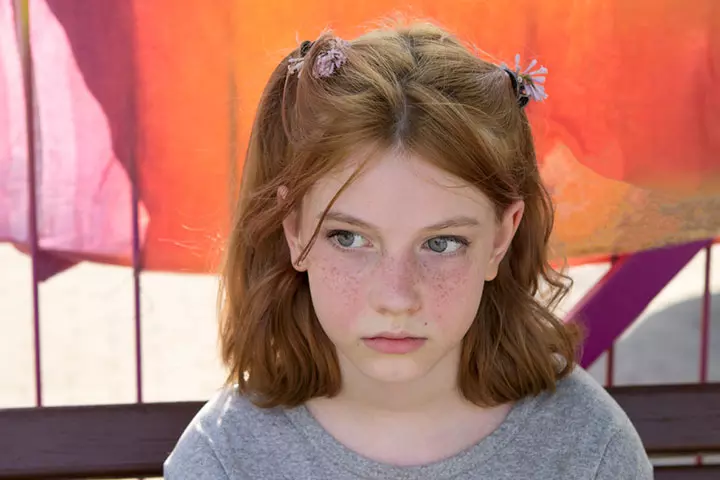
- Visible blood vessels: Dilated, small blood vessels (telangiectasia) that seem webbed may appear on the face.
- Small bumps and pimples: Skin bumps such as papules and pustules (filled with pus) may occasionally appear in the reddened areas.
- Skin plaques: Raised patches of skin that may sting.
- Thick skin: The skin becomes tight and thick, especially around the nose (rhinophyma), giving it a bulbous appearance. It may also appear on the forehead, cheek, ears, and chin. This is not a primary symptom of rosacea but may follow the other symptoms. Rather, it is very rare in children.
- Ocular rosacea (around the eyes): Recurrent pink eye (Conjunctivitis) in kids or styes (pimples on the edge of the eyelid), watery eyes, swollen eyelids, burning or stinging sensations, redness, or irritation as if there is sand in the eyes are a few signs of ocular rosacea. The child’s eyes may also become sensitive to light. In some children, eye symptoms may appear before the skin symptoms.
- Stinging or burning: You may get sensations like your skin is burning or stinging. Sometimes, it may be accompanied by itching.
- Dryness: Sometimes, you may feel that the center of your skin is dry, rough, or even scaly.
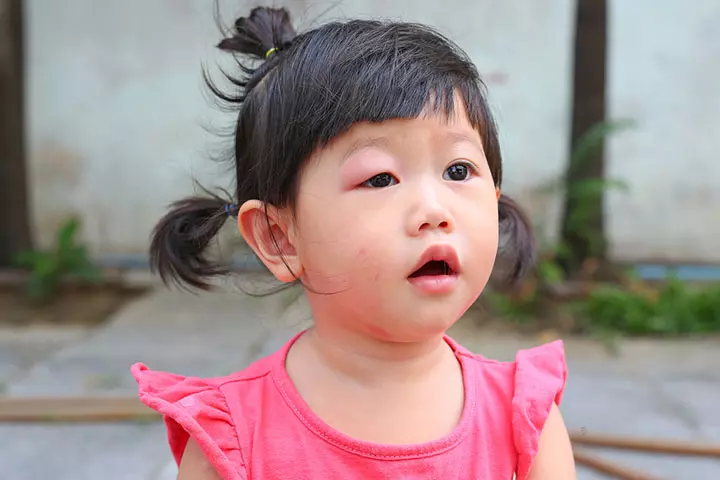
What Are The Complications Of Rosacea In Children?
Untreated rosacea may result in the following complications (4) (10):
- Permanent redness on the face
- Acne-like breakouts
- Conjunctivitis (inflammation of the eye’s outer membrane)
- Rhinophyma (bumpy and bulbous nose due to swollen nasal sebaceous glands)
- Partial or complete visual impairment due to progressed ocular manifestations of rosacea
How Is Rosacea Diagnosed In Children?
Rosacea is mostly diagnosed based on a physical examination and medical history. Occasionally, the medical care advisor may suggest blood tests to rule out the possibility of lupus (an autoimmune disease in children) (1) (12).
They may also try to rule out other skin conditions such as acne, periorificial dermatitis (inflammation of the skin around the mouth), or allergies (4) (13). Skin biopsy may be required in severe cases, not responding to treatment.
What Is The Treatment For Rosacea In Children?
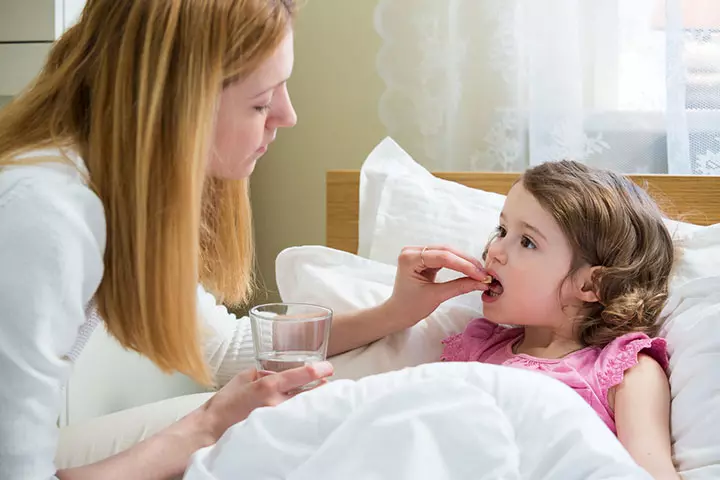
The treatment for childhood rosacea aims at managing the symptoms since there is no permanent cure. Your medical care supervisor may advise a combination of treatment options for increased effectiveness. These may include (4) (12) (14):
- Medication: Based on the symptoms, the dermatologist may suggest gels or creams. Oral antibiotic therapy or topical steroids may help reduce inflammation. Some of the topical treatments used include metronidazole, azelaic acid, and brimonidine. These can also be used alone or in combination to manage symptoms. Over-the-counter medications may be ineffective in treating childhood rosacea and, hence, should be avoided.
 Caution
Caution- Alternative treatment: If telangiectasia (visible blood vessels) is present, laser therapy or intense pulsed light (IPL) treatment may be recommended to shrink the enlarged blood vessels and make them less noticeable. In cases where rosacea leads to rhinophyma (thickened skin on the nose), surgery may be required to remove the excess tissue.
If left untreated, rosacea can worsen and long-lasting flushing can lead to permanent redness in those affected regions of the face and body. Therefore, consult your child’s doctor for tailored treatment plans based on the child’s symptoms and severity.
How Can You Prevent And Manage Rosacea In Children?

Although your child cannot prevent the onset of rosacea, they can curb the flaring up of its symptoms. Here are some tips to help prevent rosacea in children (15) (16):
- Identify the triggers: As triggers may aggravate sensitive skin, identify and eliminate the triggers to help reduce the irritation.
- Apply sunscreen: Daily use of sunscreen is recommended. Dermatologists may suggest fragrance-free and SPF 30 sunscreens containing titanium oxide, zinc oxide, or both.
- Protect the affected area: As hot and cold temperatures may trigger rosacea, ask your child to drape a scarf in extreme conditions. Opt for silk or acrylic scarves as they may be less triggering.
- Avoid heat: Avoid hot baths and excessive clothing. Ensure they maintain distance from heat sources such as heaters, and keep a cold water bottle or cold towel handy during intense activities.
- Consume the right foods and beverages: Avoid spicy foods and hot drinks. Opt for cold or room-temperature beverages instead.
A study report states, “The most frequently reported triggers implicated in rosacea include alcohol, spicy food, cinnamaldehyde-containing foods (e.g., tomatoes, citrus fruits, chocolate), hot drinks, and histamine-rich foods (e.g., aged cheese, wine, processed meats). Some food items appear to play a protective role, such as omega-3, which appears to protect against ocular rosacea (17).” - Read labels: Many cosmetics and skin care products contain ingredients that may trigger rosacea, such as sodium lauryl sulfate (common in shampoos and toothpaste), alcohol, camphor, or menthol.
- Subtle skin care: Choose a gentle skincare routine for your child. Use a gentle cleanser on their face and pat it dry. Avoid scrubbing or massaging their face, and use products recommended by your dermatologist.
- Perform patch tests: Always perform a patch test for new products to check if they cause any reactions.
- Moisturize: Studies show that moisturizing a dry or oily skin with a prescribed product could be helpful.
Frequently Asked Questions
1. What are the four stages of rosacea?
According to the National Rosacea Society (NRS), the following are the four stages of rosacea (18):
- Stage 1: Erythematotelangiectatic rosacea
- Stage 2: Papulopustular rosacea
- Stage 3: Phymas
- Stage 4: Ocular rosacea
2. What can be mistaken for rosacea?
Seborrheic dermatitis, eczema, lupus erythematosus, and other types of dermatitis may be mistaken for rosacea (19) (20). A healthcare professional can help you differentiate between these conditions.
3. Can seasonal allergies trigger rosacea in children?
Yes, seasonal allergies can trigger rosacea in children (21). Maintaining a healthy lifestyle and seeking medical care promptly during these seasonal changes may help prevent flare-ups.
4. Can diet influence rosacea symptoms in children?
Yes. Eating spicy foods and drinking hot beverages may worsen or flare up the symptoms of rosacea in some children (21).
Rosacea in children is an inflammatory disease of a rare occurrence. It is preventable and also treatable by medications and alternative therapies. Although the cause for this condition is not well-known, it could be more prevalent in children with prolonged sun exposure, abnormal immune response, and genetic predisposition. Therefore, if you notice any typical symptoms such as continued redness, or dilated and visible blood vessels on your child’s face, it is vital to see a doctor for appropriate diagnosis and prompt treatment to prevent the risk of complications.
Infographic: Does Your Child Have Rosacea Or Acne?
Rosacea may be mistaken for other look-alike skin conditions, one of them being acne. But rosacea is a more complex condition than acne requiring accurate management to avoid uncomfortable complications. This infographic will help you spot the subtle differences and manage the condition better. Illustration: Momjunction Design Team
Illustration: Can A Child Get Rosacea? Symptoms Treatment And Prevention

Image: Stable Diffusion/MomJunction Design Team
References
- Rosacea.
https://www.stanfordchildrens.org/en/topic/default?id=rosacea-85-P00311 - Rosacea.
https://www.mottchildren.org/health-library/tr5970 - Can Children Get Rosacea?
https://www.sutterhealth.org/ask-an-expert/answers/can-children-get-rosacea - Could My Child Have Rosacea?
https://www.aad.org/public/diseases/rosacea/what-is/children - Will Your Children Have Rosacea?
https://www.rosacea.org/rosacea-review/1999/fall/will-your-children-have-rosacea - Rosacea.
https://www.yalemedicine.org/conditions/rosacea - Rosacea.
https://my.clevelandclinic.org/health/diseases/12174-rosacea - Rosacea.
https://www.nhs.uk/conditions/rosacea/ - New Evidence Shows Rosacea May Be Linked to Heredity.
https://www.rosacea.org/rosacea-review/1996/fall/new-evidence-shows-rosacea-may-be-linked-to-heredity - Rosacea.
https://www.betterhealth.vic.gov.au/health/conditionsandtreatments/rosacea - Rosacea: Signs And Symptoms.
https://www.aad.org/public/diseases/rosacea/what-is/symptoms - Rosacea: Diagnosis Treatment and Steps to Take.
https://www.niams.nih.gov/health-topics/rosacea/diagnosis-treatment-and-steps-to-take - Why Is Perioral Dermatitis Often Mistaken For Rosacea?
https://www.rosacea.org/blog/2021/march/why-perioral-periorificial-dermatitis-mistaken-rosacea - Alexis Lara Rivero and Margot Whitfeld; (2018); An update on the treatment of rosacea.
https://pmc.ncbi.nlm.nih.gov/articles/PMC5828925/ - How to prevent rosacea flare-ups.
https://www.aad.org/public/diseases/rosacea/triggers/prevent - 6 Rosacea Skin Care Tips Dermatologists Give Their Patients
https://www.aad.org/public/diseases/rosacea/triggers/tips - Tamara Searle et.al; (2021); Rosacea and Diet: What is New in 2021?
https://pmc.ncbi.nlm.nih.gov/articles/PMC8794493/ - J-L Schmutz; Signs and symptoms of rosacea.
https://pubmed.ncbi.nlm.nih.gov/25151930/ - Red Skin & Rashes Are Not Always The Result Of Rosacea.
https://www.rosacea.org/blog/2016/june/red-skin-rashes-are-not-always-the-result-of-rosacea#:~:text=There%20are%20many%20different%20types%2C%20itchy%2C%20red%20and%20cracked - Rosacea Differential Diagnoses.
https://emedicine.medscape.com/article/1071429-differential#:~:text=The%20differential%20diagnosis%20largely%20dependscauses%20of%20erythema%20and%20telangiectasia - Spring Forward Not Backwards With Your Rosacea.
https://www.rosacea.org/blog/2014/march/spring-forward-not-backwards-with-your-rosacea
Community Experiences
Join the conversation and become a part of our nurturing community! Share your stories, experiences, and insights to connect with fellow parents.
Read full bio of Dr. Anuradha Bansal
Read full bio of Sindusha MS
Read full bio of Dr. Ritika Shah
Read full bio of Dr. Joyani Das





